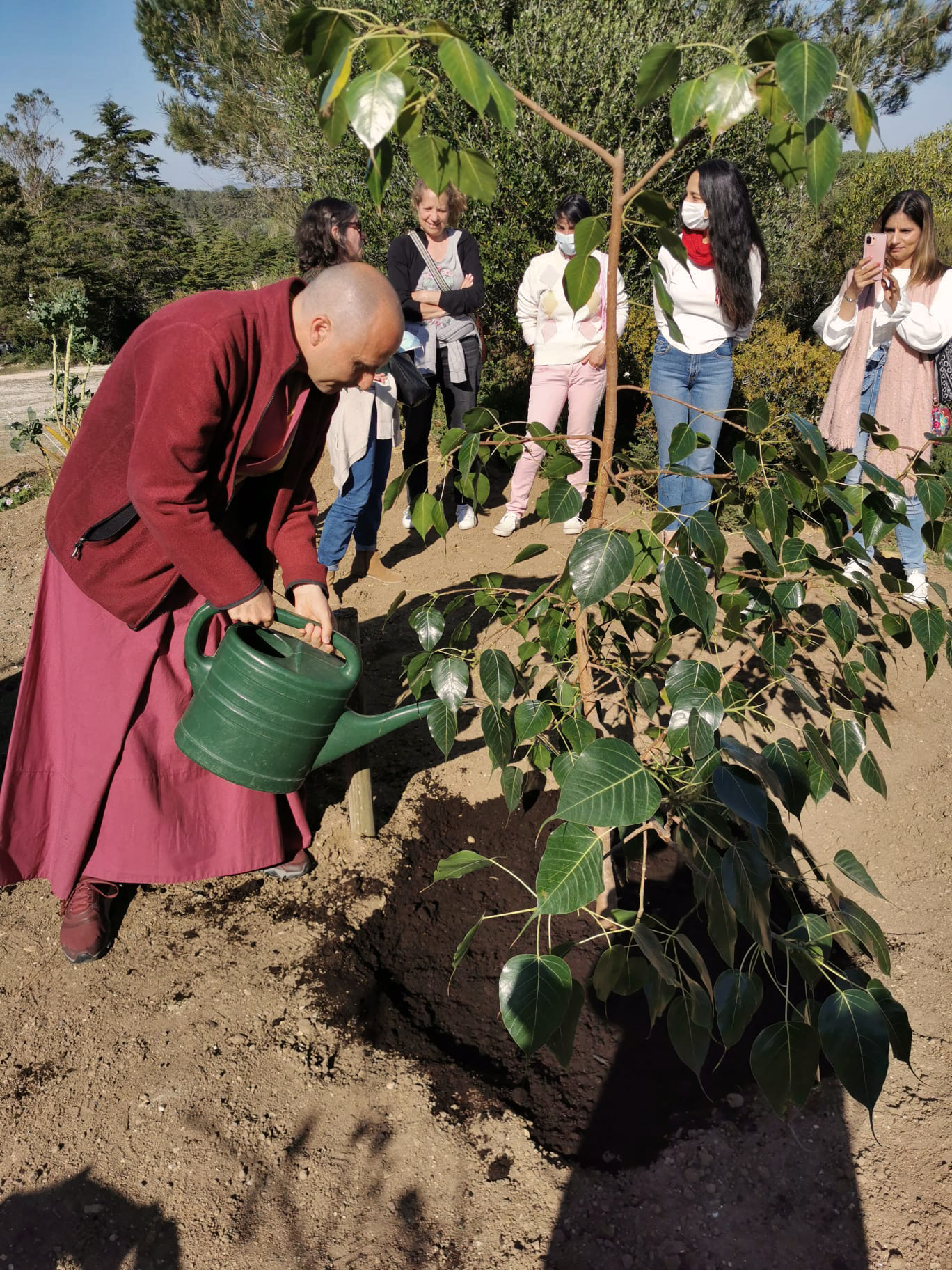Tashi Delek! Happy LOSAR Tibetan Lunar New Year Year of the Dragon; how to prepare, how to celebrate to bring auspicious blessings
TASHI DELEK, HAPPY LOSAR — YEAR OF THE WOOD DRAGON. Let the dragon chase away 2023 blues! In this feature we highlight ways to bring in the most auspicious bunny year possible. On the Tibetan Lunar Calendar, Losar...

TASHI DELEK, HAPPY LOSAR — YEAR OF THE WOOD DRAGON. Let the dragon chase away 2023 blues! In this feature we highlight ways to bring in the most auspicious bunny year possible.

On the Tibetan Lunar Calendar, Losar — New Year! — falls on February 10, 2024
TASHI DELEK!
This Losar, on February 10, 2024, marks the first day, the first month of the year 2150, and the beginning of the Chothrul Duchen celebrated for 15 days to honor the 15 miracles of Buddha Shakyamuni.
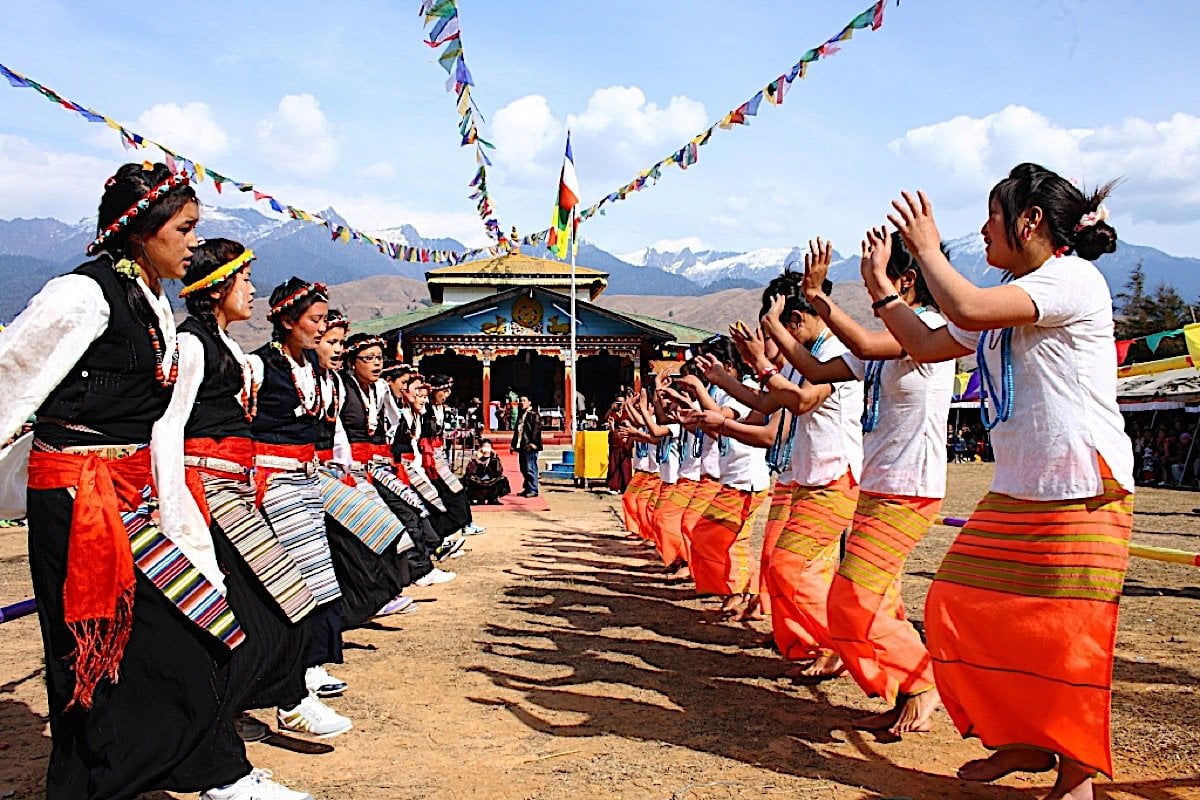 During New Year, there will be traditional dances and celebrations — depending on the area of the world.
During New Year, there will be traditional dances and celebrations — depending on the area of the world.
What is LOSAR and why is it celebrated?
Losar marks the start of the Year of Wood Dragon is an exciting time with all sorts of fun festivities and traditions! It is also a meritorious Dharma celebration, as it is the first of 15 Days of Miracles of the Buddha. [See our features on the 15 Days of Miracles and Chothrul Duchen, the Day of Miracles.]
According to Lama Zopa Rinpoche, citing the Vinaya text Treasure of Quotations and Logic, Karmic results of all activities on Holy Days (including the 15 Days of Miracles) are multiplied one hundred million times. [1]
This is also Maitreya Day, especially in the Mahayana traditions, which is celebrated on the first day of the Lunar Year. [See our special feature on Maitreya Day!]
This is especially the best time of the year for generosity, offerings, and charity since the merit is multiplied so significantly. It is important to bring in positive merit at the beginning of the year to set a “positive karma” tone for the year, and to help bring in auspiciousness for all beings.

15 Days of Miracles
LOSAR is also the beginning of the celebration of the 15 miracles of Shakyamuni Buddha, which culminates 15 days later with Chothrul Duchen, the “Day of Miracles.” — on of the most sacred of the Holy Days of Buddha. [For a full feature on the 15 Miracles in 15 Days, complete with the lovely stories of the miracles, see>>] There are four very special Holy Days, of which Chothrul Duchen is the first in the new year:
Days 1–15 of Month 1 (lunar) 15 Miracles of Buddha: Lord Buddha performed 15 miracles to increase faith; the 15th day marks especially is celebrated as the Day of Miracles. Day 15 of Month 4: Lord Buddha’s birth, enlightenment and parinirvana Day 4 of Month 6: Lord Buddha’s first teaching. Day 22 of Month 9: Lord Buddha’s actual descent from God Realm of Thirty-three.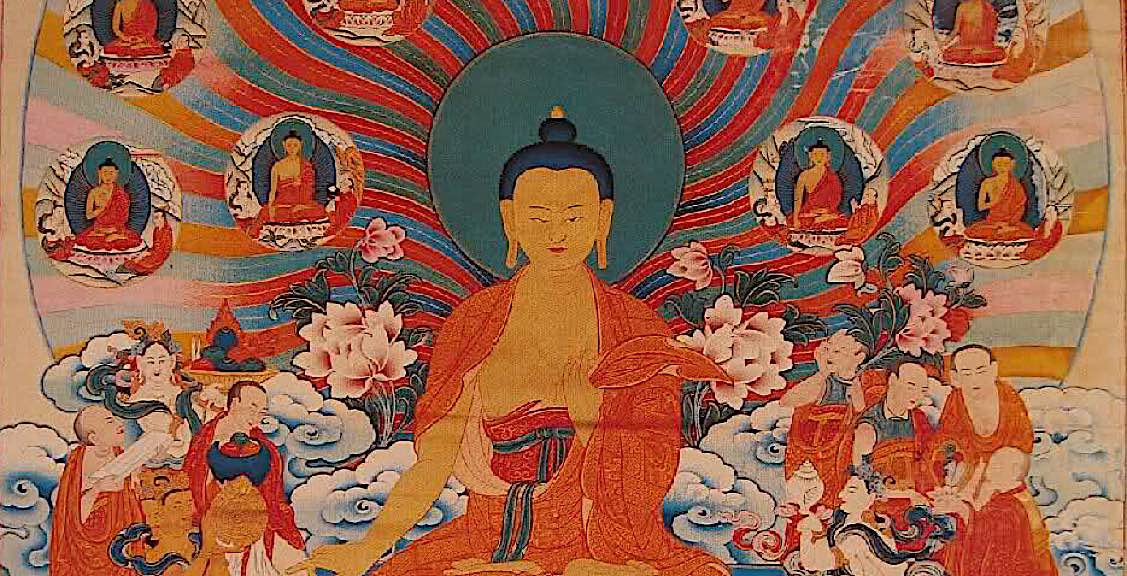 Thangka depicts the 15 days of Buddha’s miracles. For a feature on the 15 miracles — with the stories of each miracle — see>>
Thangka depicts the 15 days of Buddha’s miracles. For a feature on the 15 miracles — with the stories of each miracle — see>>
Losar itself is celebrated not only on the first day of the Tibetan Lunar New Year (this year February 10, 2024) but for the first 15 days of the year, celebrating the 15 miracles of the Buddha.
During that time, it is traditionally celebrated with temple visits, ceremonies, offerings, meditation, dancing, feasts and plenty of merrymaking with family and friends.
 Tibetan New Year events help to bring in an auspicious new year.
Tibetan New Year events help to bring in an auspicious new year.
Everyone enjoys Losar because it offers a chance to come together and enjoy food, music and games – what could be better? We also set our minds on an auspicious and healthy year ahead.
So get ready to welcome in Losar – it will definitely prove to be an enjoyable occasion — and it is our opportunity to bring in the auspiciousness traditionally associated with Rabbit years!
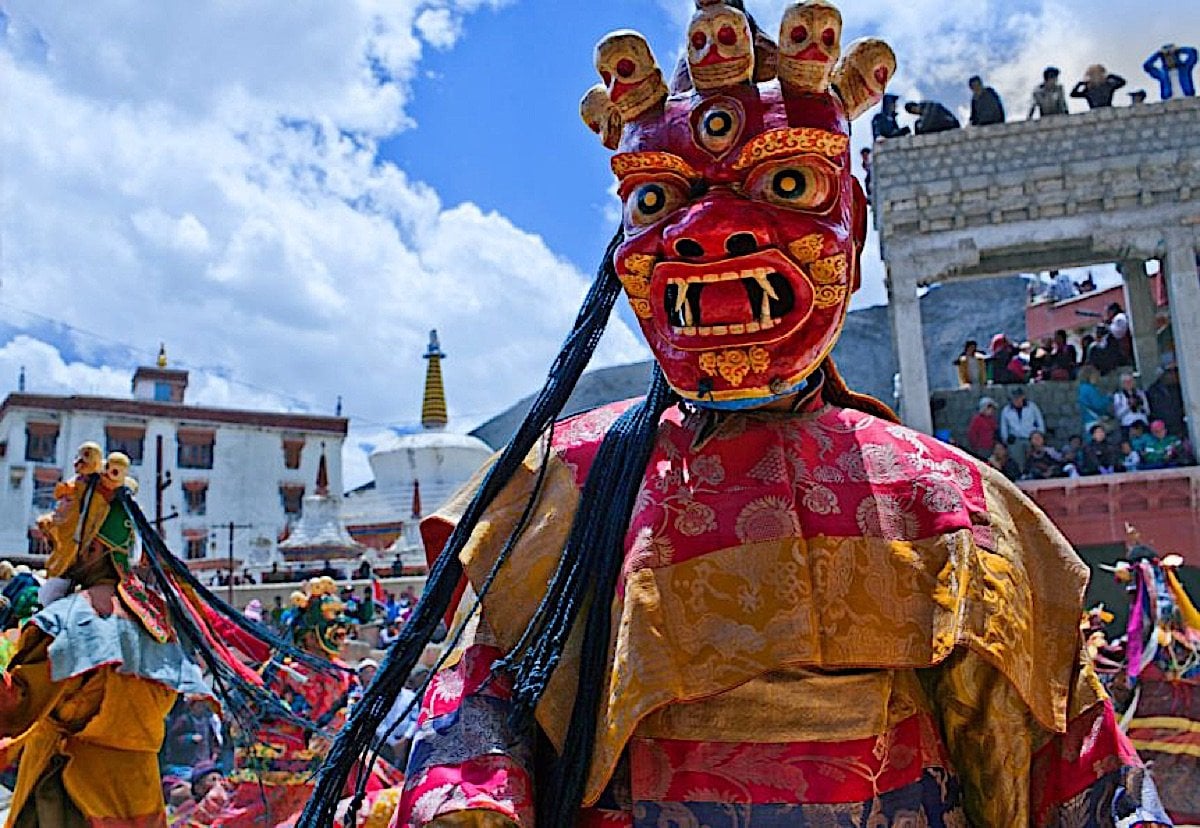 Prior to New Year, there is often a traditional Cham dance designed to “scare away” the demons, spirits, ghosts. For a feature on Cham dance, see>>
Prior to New Year, there is often a traditional Cham dance designed to “scare away” the demons, spirits, ghosts. For a feature on Cham dance, see>>
How do we prepare for Tibetan New Year, before actual Losar?
Before Tibetan New Year, or Loosar, arrives it’s important to prepare! To mark the end of the old year and beginning of the new one, it is important to clean the home and create a relaxed environment. Shopping for food, clothes and traditional decor also sets tibetan households into a festive spirit.
Gutor Mahakala Cham video:
Families often buy special cuisine like momos or sel roti for celebration treats! People decorate their yards with colorful prayer flags and hang garlands made from wildflowers. On New Year’s Eve there is even more hustle as family members finish (or start!) preparations for big feasts and gatherings. With good tidings and wishes of joy by candlelight, it’s time to count down until Tibetan New Year though we are never done with preparing… Losar is made up of fifteen days of celebrations after all!
 Happy Losar 2023
Happy Losar 2023
15 Days Before New Year
Preparing for the actual day is often more involved than the celebrations! (For preparations, see below.)
Running up to New Year, Tibetan Buddhists especially, undertake purification practices, especially Vajrasattva and other practices in the last 5 days of the old year — that help us remove obstacles, negative karmas, and situations going into the New Year.
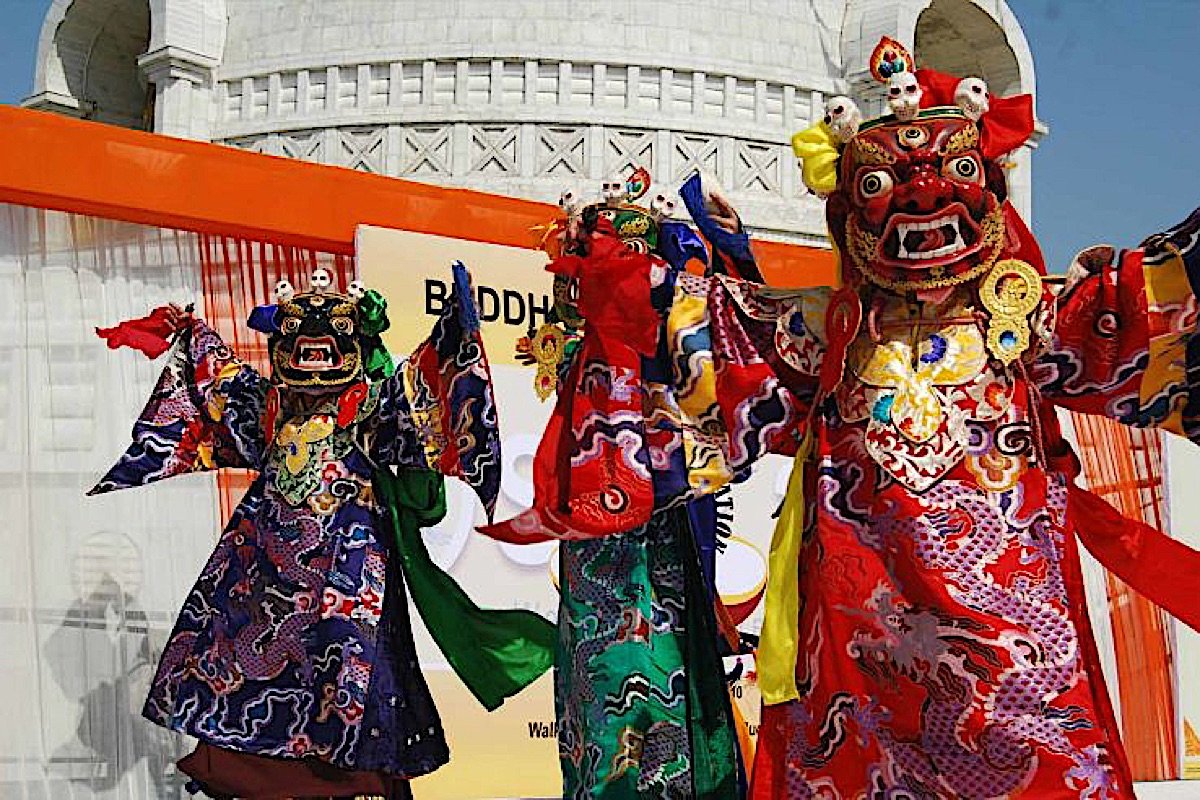 Cham dance.
Cham dance.
Traditionally, celebrants will prepare for Losar by
Cleaning their houses (sweeping away the misfortunes of the previous year) — before New Year. It is not considered lucky to sweep for the first few days of the actual New Year as you might (sweep away the new good luck.) Buddhist monasteries and gompas will perform rituals on this last day, the famous mask dances, which symbolically drive away the negative forces of the old year. Traditionally, a person should not clean their house for the first few days of Losar to symbolically preserve the luck. Serious Buddhists might spend the last five or more days on purification practices such as Vajrasattva and Vajrakilaya. There will often be protector pujas, for example to Palden Lhamo, the great protectress of Tibet and the Dalai Lama. [More about Palden Lhamo here>>] In monasteries and traditional Tibetan Buddhist areas, Cham Dance is typically performed during Losar — a special Buddhist ritual dance that is performed in order to drive away evil spirits. See our feature on Cham Dance>> During New Year, there will be traditional dances and celebrations — depending on the area of the world.
During New Year, there will be traditional dances and celebrations — depending on the area of the world.
What are some of the traditions associated with LOSAR, and how can you participate even if you’re not Tibetan Buddhist yourself?
If you’re feeling a bit left out when it comes to celebrating traditional Tibetan Buddhist festivities, then Losar is the perfect celebration to get involved in!
Everyone can participate in this exciting event. It’s the traditional New Year for Tibetans and marks the beginning of their new year. It also marks 15 sacred days — but even if you’re not Buddhist, you can enjoy the festivities which range from traditional ceremonies to feasting to music, concerts and dance celebrations. If you have an opportunity to watch a traditional Cham Dance, don’t miss it!
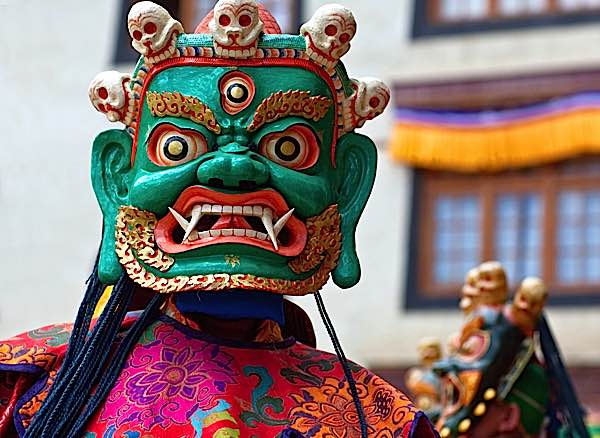 On the last day of the year, Gompas and monasteries usually hold fantastic and colourful masked Cham dances to drive away the negativities of the old year.
On the last day of the year, Gompas and monasteries usually hold fantastic and colourful masked Cham dances to drive away the negativities of the old year.
Many celebrants share food with their friends and family or indulge in the ceremonial tsampa, an average dish of roasted barley flour mixed with butter and tea.
Astronomical observations act as a common tradition throughout LOSAR as well, which involve looking at the first sunrise, and often checking out your lunar horoscope for the year ahead.
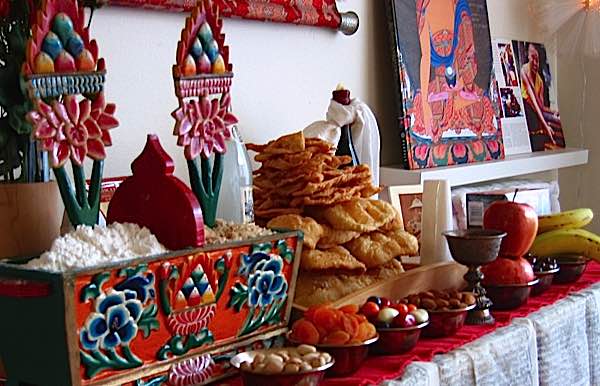 Making offerings on your shrine on Losar is a way of creating new year merit and of creating a festive environment. You should make the offerings before you eat your first meal (ideally).
Making offerings on your shrine on Losar is a way of creating new year merit and of creating a festive environment. You should make the offerings before you eat your first meal (ideally).
Tashi Delek! “Auspicious Wishes!”
Other traditions include exchanging gifts and wishing loved ones good luck during this time, offering khatas to older relatives, phoning all your family and friends even if you can’t see them to wish them well, with a hearty “Tashi Delek” (བཀྲ་ཤིས་བདེ་ལེགས) — which can translate as “auspicious wishes.”
Colourful Gorshey dancing (circle dancing):
What are some of the best ways to celebrate LOSAR 2023, whether you’re in Tibet or elsewhere in the world?
Celebrating Losar 2023 can be a blast, no matter where you are in the world! Think of Losar 2023 as an occasion to celebrate friendships and come together as one no matter which corner of the world you reside in!
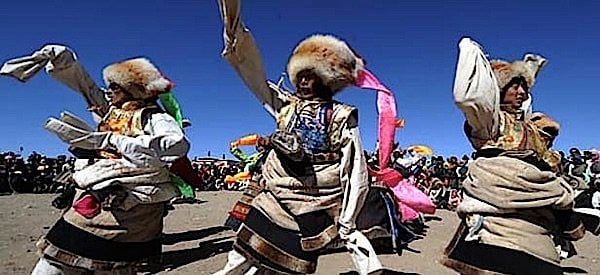 Losar is a time of festivities, dance, parties, shows, and ceremonies.
Losar is a time of festivities, dance, parties, shows, and ceremonies.
On New Year’s Day, people usually wake up early and take a bath before donning new clothes. Afterward, they traditionally place offerings of dough called Torma on the family shrines to begin their annual praying ceremony. The creative designs created from this special pastry make for an exciting experience!
Usually, the family will come together to enjoy a celebration dinner, offering presents and tokens of appreciation. In Tibetan households, Kapse cake and Chang alcoholic drink are customary items served during this meal.
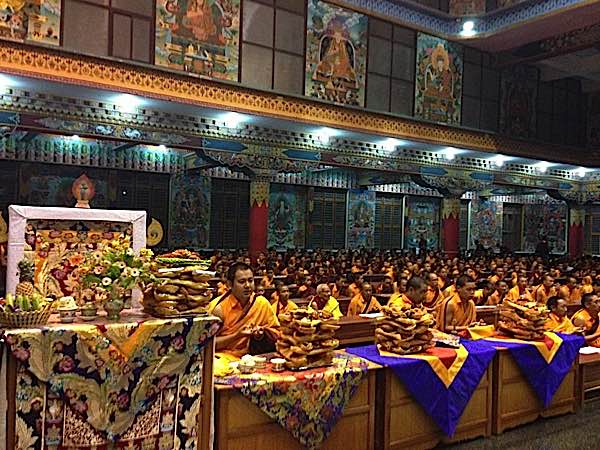 The third day is typically for visiting the monasteries, temples and gompas.
The third day is typically for visiting the monasteries, temples and gompas.
Traditionally, everything should be symbolically new — new clothes, new food (no leftovers!), new enthusiasm for the year ahead.
On the second day of Gutor, a multitude of religious rituals take place — the first day of the year is mostly family, the second day is for Dharma practice and to honor the Sangha. People are encouraged to honor and respect their teachers, Rinpoches, guides, and the monk and nun community by making donations to local monasteries, Dharma centers are other groups that help propagate Dharma.
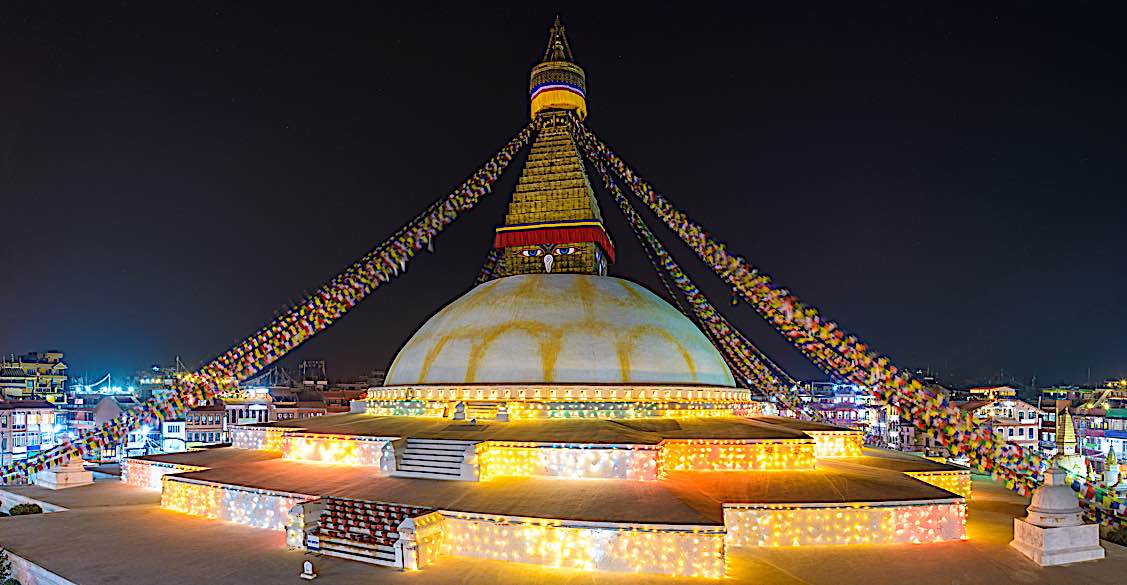 Losar in Nepal is brilliantly lit up at the Boudanath Stupa Kathmandu. Lots of light brings in brightness for the New Year.
Losar in Nepal is brilliantly lit up at the Boudanath Stupa Kathmandu. Lots of light brings in brightness for the New Year.
LOSAR Shrine Offerings
If you have a shrine, replace all offerings with fresh and elaborate new offerings.
The most iconic culinary item featured during Losar is the scrumptious New Year deep-fried cookies known as khapse — which make ideal shrine offerings as well! For offering, you will usually find piles of different types of khapse and often multi-colored candies. To make a stunning display for their shrines, we often adorn them with an abundance of cookies, candies, fresh fruit, and dried fruits to create aesthetically pleasing arrangements that are teeming with freshness.
All the “sensory” offerings should be as elaborate and fresh as possible to signify your generous offerings and help bring in an auspicious year, especially
tea flowers beautiful objects sounds (try looping some celebratory music or mantras on a player) light — plenty of bright lights and cheeriness khatas (white scarves) which can be placed around statues or other objects on your shrine. seven (or eight) bowls of water to symbolize the sensory offerings (or, ideally, multiple rows of water bowls!) Waters represent purity and blessings.Traditional Losar Songs:
Seven (or eight) bowls of water represent the seven sensory offerings (or eight if you include “sound”) which reflect how we welcome guests to a dinner:
Argam: water for drinking Padyam: water for washing Pushpe: flowers Dhupe: scents or incense Aloke (or Dipe): lights or butter lamps Ghande: scented water or perfume Naividya: food Shabda: sound (this one is isn’t always a bowl, since we make sounds when we pray, celebrate and recite mantras.The ultimate offering is your own Dharma practice and activities.
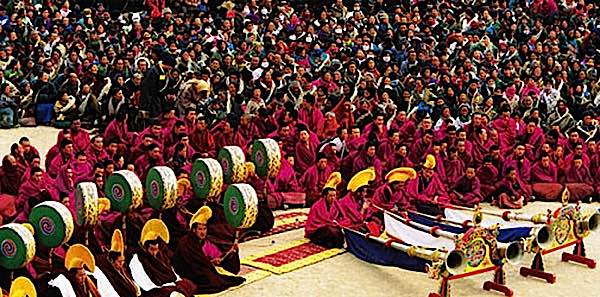 Elaborate festivities at some monasteries and gompas.
Elaborate festivities at some monasteries and gompas.
NOTES
[1] Tibetan Calendar 2023 FMPT, quoting Lama Zopa Rinpoche.

 Aliver
Aliver 








